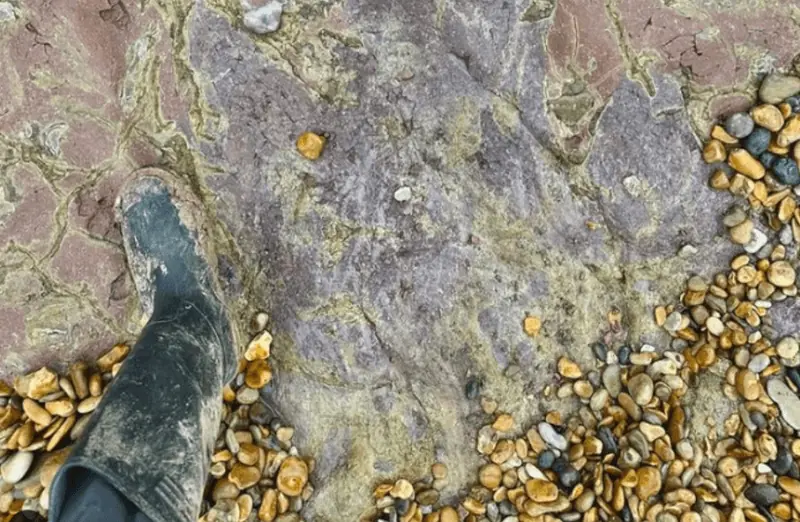Joe Thompson, a fossil guide with the British tour organization Wight Coast Fossils, stumbled upon a rare purple dinosaur footprint. The expert made this discovery while exploring the coast of the Wessex Formation on the Isle of Wight, the largest island off the coast of England, which shares its name with the county. Located just 5 kilometers from the British mainland, this hilly and flat patch of land rises 240 meters above sea level and covers an area of 381 square kilometers.
The one-meter-long footprint was revealed by recent storms that stripped away layers of gravel on Shepherd’s Chine beach. While searching for fossilized bones, Thompson suddenly noticed a large purple toe protruding from the gravel, as reported by the Jerusalem Post. The unusual color of the imprint is attributed to the minerals found in the area. According to the expert, the footprint belongs to a large dinosaur from the ornithopod group, likely an iguanodon or a closely related species. Iguanodons were herbivorous giants of the early Cretaceous period, reaching lengths of over 10 meters and weighing an average of three tons. These extinct creatures had large thumbs equipped with distinctive spikes, essential for protection against predators.
Thompson noted that the remarkably well-preserved dinosaur footprint is expected to disappear within a few months. Iguandon tracks are rare and fragile, often found in sedimentary rocks that eventually erode. “It’s a shame that such footprints aren’t eternal; they wash away after some time. Therefore, this find needs to be documented quickly,” the researcher added.

Wight Coast Fossils shared photographs of the footprint on social media, confirming that such clay tracks “are often short-lived and deteriorate quite rapidly after surfacing.” This discovery further solidifies the Isle of Wight’s reputation as a hotspot for dinosaur fossils. The finding came just weeks after paleontologists uncovered the largest collection of dinosaur footprints in the UK, dating back 166 million years. These 200 prints, hidden in a quarry in Oxfordshire, marked the trails of sauropods and megalosaurs. The Isle of Wight, also known for its rich fossil deposits, has been the site of numerous paleontological discoveries. The Wessex Formation dates back to the early Cretaceous period, meaning it is 110-140 million years old. At that time, the area was a floodplain teeming with dinosaurs and other prehistoric creatures.

